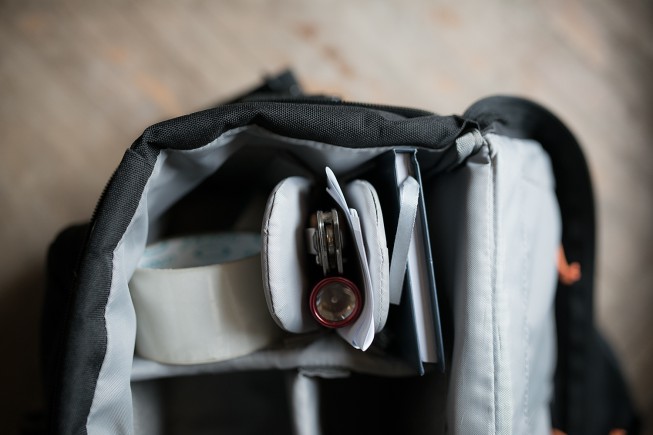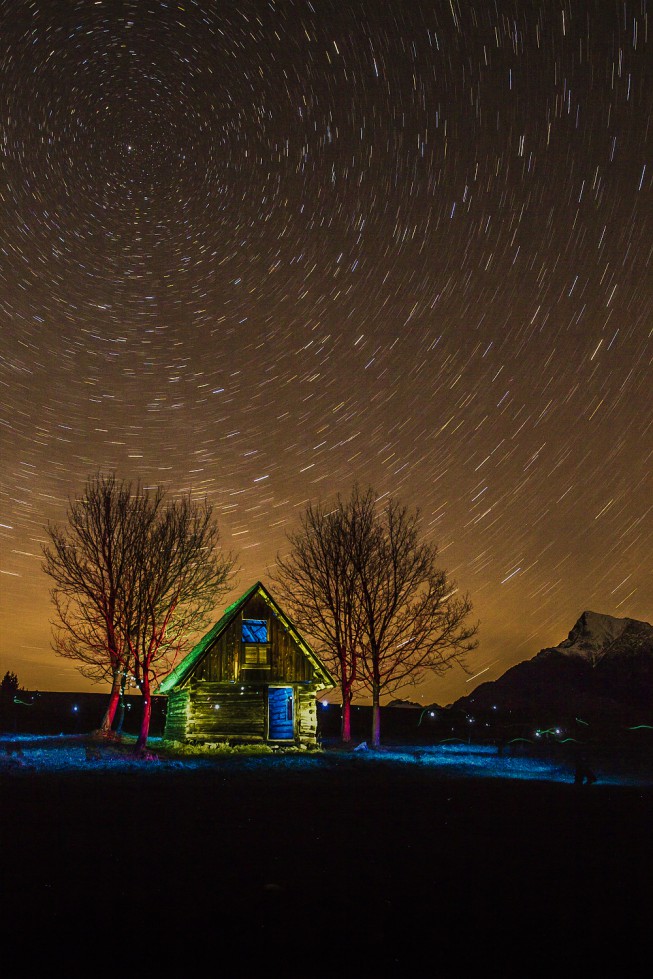What Should Be in Your Camera Bag?

We recently offered some advice on how to choose a camera bag. This time, we’ll tell you what ought to be in it besides just a camera. We’ll start from the basics, but we have some surprises for you at the end.
Although our recommendations are based on years of practice, you still shouldn’t take them as dogma. But we’re confident that they’ll make your work easier and ease you through some special situations, no matter whether you’re a beginner or a pro.
I’ve Got a List
Let’s start with the basics: charger, microfiber cloth, spare memory cards, laptop, USB cable… We all know these ordinary items and how to use them, so they need no introduction here.
Now let’s move on to some more interesting things that you wouldn’t imagine among classical photo gear:
- A compass
- A flashlight
- A paper notebook
- A dictaphone
- Legal/A3 blank paper
- And the most important for last: electrical tape!

A compass
The compass isn’t to keep from getting lost. It’s to help guess lighting conditions. On the road, you can find possible shoot sites that sometimes take a while to get oriented in. And some of these sites can look great but have very bad lighting. A compass makes it simple to orient yourself in the cardinal directions. That makes it easier to guess how a site will look at sunrise or sunset.
Photographers doing long exposures of the night sky will appreciate a compass too. Just point your camera with a wide-angle lens to the north to get an unmoving star (the North Star) in your sky.
Flashlight
This simple tool will help you take good pictures in bad lighting conditions. Sometimes cameras have trouble focusing precisely in bad light, even with the help of the lamp on the camera. Just shine the flashlight at the place you want to focus on, then focus. You can also use the flashlight for creativity. All you need is a tripod and a long exposure setting, and your flashlight can become a luminous paintbrush. The sky’s the limit! And if it doesn’t work out, just delete the result.
Dictaphone and Notebook
If you’re really caught up in photography, then you think about it constantly. Do you find yourself thinking about scenery and subjects over the course of each day? If so, then you know that ideas can leave as easily as they arrive. So summarize them briefly in a notebook or on a dictaphone (or even your phone mic) before they leave port. Always have your paper or digital notes at your side, especially when thinking up scripts and compositions for your shoots.
Blank Paper
Don’t worry, you can let it get a little wrinkled. But you should keep it at hand. You can use the paper as a small, low-budget reflector (e.g. for eye reflections) and as a background when photographing small details.
Electrical Tape
Electrical tape has countless uses in many fields. So it’s no wonder that you’ll find it photography too. You can use it as a tripod — just put the camera on it, set the camera timer, and start shooting. It’s also useful, just like the compass, for night photography. You can use it to improvise a replacemetn for a cable trigger. Ball up a little piece of tape and then set the timer on the camera and use bulb mode. Put the ball of tape on the trigger and just tape over it. To complete the shot, you cover the lens and only then remove this “cable” trigger. This tape (especially in silver) is also a favorite of photographers in high-risk zones. Expensive new equipment with huge branding on the straps is very attractive for thieves. Tape over the logos, and if you’ve got a Canon, tape over the white lens symbols too. This makes the camera look damaged, and thus uninteresting.

If you have your own tips and tricks in this area, don’t hesitate to send them in. Just add a short comment beneath the article or on our Facebook. We’ll be glad for all the tips and experience you can share.